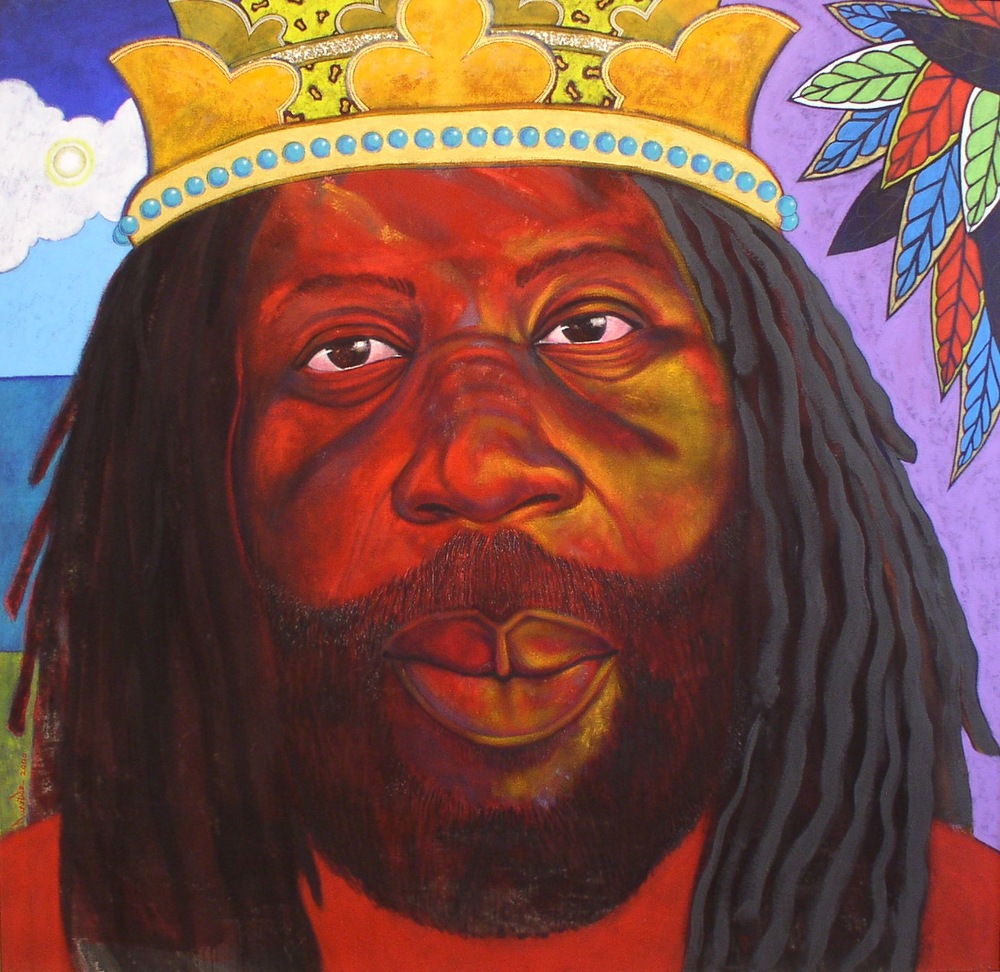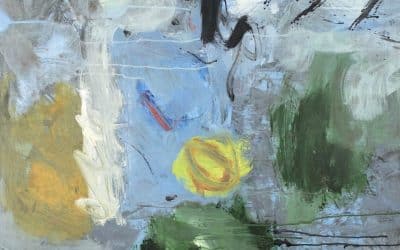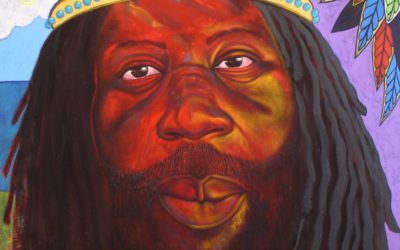
By Natassia Pratt
If a visitor at the National Art Gallery of The Bahamas were to wander into the office, found on the second floor, and make a left turn, one of the first things they would see is a “larger than life” painting of a man gazing back at them with a contemplative yet peaceful expression on his face. That would be Stan Burnside’s feature piece, “Solomon” (2000).
The viewer might come to ask themselves: Why is he wearing a crown? What is the meaning behind the colourful leaves to the upper right corner of the canvas? Why is the sea only on the right side of the man’s shoulder? And what is with the purple colouring to the left of the work? To answer these questions, two men of importance must be briefly acknowledged.
The first is the late Macfarlane Gregory Anthony Mackey, otherwise heard of as, “Tony McKay” and known to many Bahamians as musical performing legend, “Exuma: The Obeah Man”. Born in Cat Island, McKay wrote and sang prolific songs about Bahamian culture that continues to resonate with visitors and Bahamians today.
The second man is King Solomon, credited as the wisest, richest and most powerful king in the Bible.
The dots begin to connect when the viewer recognises McKay in Burnside’s work, “Solomon”. Burnside creates a bold commemorative piece of art that acknowledges McKay’s memory and status as a leader in what he did for the Bahamian art community. McKay’s face is given life with the vivid use of colour. The yellows and browns seem to reflect the very light of the sun. The artist perhaps chose the colour purple to fill the space left of McKay’s face – undoubtedly a reference to the esteem Burnside feels McKay deserves.
The croton leaves, a native plant grown in The Bahamas, are placed in the upper right corner of the canvas. It would not be too far removed to say that this alludes to the vibrancy of McKay’s culture and his deep roots in The Bahamas. Behind McKay’s right shoulder, Burnside paints a view of the ocean, another clear symbol of McKay’s Caribbean roots. The viewer should not ignore the crown that sits snugly over McKay’s locs – this is Burnside’s assertion of McKay’s wisdom and kingly status in Bahamian history.
We sympathise with the viewer who pauses expectantly in front of the image waiting on McKay to burst into song. The peaceful gaze itself readies the viewer for a calm, wise word that only a king could give. Perhaps you’ll have a different experience all together, but there is only one way to find out.
Visit the NAGB today and see Burnside’s “Solomon” for yourself. Feel free to leave a comment or send us ab email, we look forward to hearing from you!


